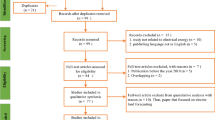Abstract
A model to determine the optimal consumption level and associated reserve offer for a large consumer in a co-optimised electricity market is presented. The method uses numerical simulation along with a full representation of the New Zealand electricity market dispatch model. Uncertainty is introduced through the use of stochastic demand sampling. We approach this process in three phases: phase one contains simulations to determine potential energy and reserve prices under uncertainty. Phase two uses a dynamic programming method, adapted from a generator model, to determine the optimal reserve offer. Phase three is the repetition of phase one with the optimal reserve offer intact. The model has been applied to a user in New Zealand and initial results have been presented. The model approached a theoretical maximum profitability when used as an input to a site curtailment response strategy.








Similar content being viewed by others
Notes
We assume that the site can continue to provide generation during an interruptible load event and therefore may continue to receive revenue for this, noting that if \(C_{G} \ge \lambda \) the site should curtail generation as well, although this holds true in all periods. Some markets may also introduce a per event payment as well which we have not added into this formulation, in essence an availability payment and a dispatch payment. The site disruption cost (\(D_{R}\)) will be unique to each site and for some units may be zero, e.g. interrupting a refrigerator compression cycle for 10 min may have a negligible effect.
References
Alvey T, Goodwin D, Ma X, Streiffert D, Sun D (1998) A security-constrained bid-clearing system for the New Zealand wholesale electricity market. IEEE Trans Power Syst 13(2):340–346
Bautista G, Anjos M, Vannelli A (2007) Numerical study of affine supply function equilibrium in AC network-constrained markets. IEEE Trans Power Syst 22(3):1174–1184. ISSN 0885-8950. doi:10.1109/TPWRS.2007.901299
Borenstein S, Jaske M, Rosenfeld A (2002) Dynamic pricing, advanced metering, and demand response in electricity markets. Center for the Study of Energy Markets, Berkeley
Chakrabarti B (2007) Multiple security constrained energy dispatch model. Illinois, Dekalb
Chakrabarti B, Bullen D, Edwards C, Callaghan C (2012) Demand response in the New Zealand electricity market. In: Transmission and distribution conference and exposition (T D), 2012 IEEE PES, pp 1–7. doi:10.1109/TDC.2012.6281718
Cleland N, Young BR, Zakeri G (2014a) Reserve constraints in electricity markets; effects on large scale integrated consumers. In: 2014 IEEE innovative smart grid technologies—Asia (ISGT Asia), pp 296–301. doi:10.1109/ISGT-Asia.2014.6873806
Cleland N, Zakeri G, Pritchard G, Young B (2014b) Integrating consumption and reserve strategies for large consumers in electricity markets. In: 11th international conference on computational management science—Lisbon 2014, Lisbon
Cramton P (2003) Electricity market design: the good, the bad, and the ugly. In: Proceedings of the IEEE Hawaii International Conference on System Sciences. http://drum.lib.umd.edu/handle/1903/7078
Drayton-Bright GR (1997) Coordinating energy and reserves in a wholesale electricity market. PhD thesis, University of Canterbury, Christchurch
Ela E, Milligan M, Kirby B (2011) Operating reserves and variable generation: a comprehensive review of current strategies, studies, and fundamental research on the impact that increased penetration of variable renewable generation has on power system operating reserves. Technical report NREL/TP-5500-51978, NREL, NREL
Ellison JF, Tesfatsion LS, Loose VW, Byrne VW (2012) Project report: a survey of operating reserve markets in US ISO/RTO-managed electric energy regions. Sandia Natl Labs Publications. http://www.sandia.gov/ess/publications/SAND2012_1000.pdf
Galiana F, Bouffard F, Arroyo J, Restrepo J (2005) Scheduling and pricing of coupled energy and primary, secondary, and tertiary reserves. In: Proceedings of the IEEE, vol 93, issue 11, 1970–1983. ISSN 0018-9219. doi:10.1109/JPROC.2005.857492
Gonzalez P, Villar J, Diaz CA, Campos FA (2013) Joint energy and reserve markets: current implementations and modeling trends. Electr Power Syst Res 109:101–111. ISSN 0378-7796. doi:10.1016/j.epsr.2013.12.013
Hurlbut D, Rogas K, Oren S (2004) Protecting the market from hockey stick pricing: how the public utility commission of Texas is dealing with potential price gouging. Electr J 17(3):26–33. ISSN 1040-6190. doi:10.1016/j.tej.2004.03.001
Kirschen D (2003) Demand-side view of electricity markets. IEEE Trans Power Syst, 18(2):520–527. ISSN 0885-8950. doi:10.1109/TPWRS.2003.810692
Miguelez EL, Cortes IE, Rodrguez IE, Camino IE (2008) An overview of ancillary services in Spain. Electr Power Syst Res 78(3):515–523. ISSN 0378-7796. doi:10.1016/j.epsr.2007.03.009
Naidoo R (2015) vSPD—vectorised scheduling pricing and dispatch model. Electricity Authority, Wellington
Neame PJ, Philpott AB, Pritchard G (2003) Offer stack optimization in electricity pool markets. Oper Res 51(3):397–408
Strbac G (2008) Demand side management: benefits and challenges. Energy Policy 36(12):4419–4426. ISSN 0301-4215. doi:10.1016/j.enpol.2008.09.030
Transpower (2008) SPD model formulation. Technical report, Transpower, Wellington
Author information
Authors and Affiliations
Corresponding author
Rights and permissions
About this article
Cite this article
Cleland, N., Zakeri, G., Pritchard, G. et al. Boomer-Consumer: a model for load consumption and reserve offers in reserve constrained electricity markets. Comput Manag Sci 12, 519–537 (2015). https://doi.org/10.1007/s10287-015-0241-2
Received:
Accepted:
Published:
Issue Date:
DOI: https://doi.org/10.1007/s10287-015-0241-2




